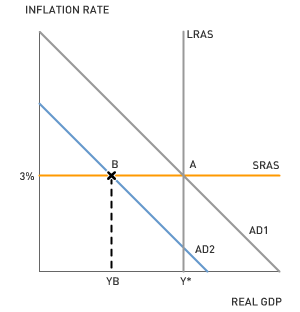Paul Romer on Economic Growth
by Brandon Fuller Aplia founder Paul Romer was recently interviewed by Russell Roberts of George Mason University (you can find the podcast here). Some of the discussion revolved around Romer's entry on economic growth in the Concise Encyclopedia of Economics.
Aplia founder Paul Romer was recently interviewed by Russell Roberts of George Mason University (you can find the podcast here). Some of the discussion revolved around Romer's entry on economic growth in the Concise Encyclopedia of Economics.As Romer points out in both the interview and the encyclopedia entry, small differences in the growth rate of income per capita lead to extraordinary differences in living standards over time. A simple formula allows us to consider the growth of average income over time, where n is the number of years and the growth rate is stated in decimal form:
(Initial per Capita Income Level) x (1 + Growth Rate)n
In the interview, Romer contrasts growth rates of 2.1% and 2.6% per year. For example, if U.S. income per capita is initially $30,000 and grows at a long-term rate of 2.1% per year, then after a period of 100 years, income per person will be approximately $30,000 x (1.021)100 = $240,000. How much higher would income per capita be after 100 years at a growth rate of 2.3% per year? What about 2.6%?
To achieve slightly faster income growth, an economy must be able to generate more new ideas and find applications for those ideas that result in more valuable products and services. As Romer points out, human history teaches us that economic growth springs from better ideas, not just from more output. Better ideas generate greater value per unit of input.
Discussion Questions
1. Consider the benefits of a simple idea Romer mentions in his encyclopedia article: the one-size-fits-all lid for coffee cups. How do you think this idea generated more value per unit of input for the coffee-cup manufacturer? What about the coffee shop?
2. According to Romer, "The knowledge needed to provide citizens of the poorest countries with a vastly improved standard of living already exists in the advanced countries." What types of policies serve as barriers to the flow of ideas into poor countries? What types of policies might allow poor countries to take advantage of existing ideas and, as a result, contribute more new ideas of their own?
3. Faster growth and higher living standards depend in part on the strength of the incentives we face to generate and apply new ideas. When people can benefit from an idea without paying for it, the incentive to develop new ideas will be weaker. On the other hand, once an idea is discovered, not allowing it to be shared can be inefficient or even immoral. How do intellectual property rights, such as patents and copyrights, strengthen the incentive to discover new ideas? How might intellectual property rights hinder economic growth? Congress is currently considering reforms to patent laws in the United States. (A recent PC World article highlights the difficulty of designing patent laws that give inventors an incentive to develop new ideas while at the same time encouraging the rapid diffusion of new ideas at minimal cost.)
4. What, according to Romer's piece, are meta-ideas? What meta-ideas have we used in the past to strengthen the incentives to develop new ideas?
Labels: Economic Growth, Incentives







